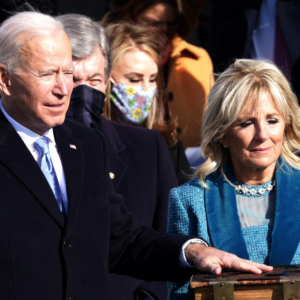Colorado image via Wikimedia CommonsSecession movements, whether focused on a split with the federal government of the United States or on a regional split to become the “51st” state, are as old as the federal republic. These days, active secessionist and autonomous groups often represent frustrations with policy priorities in either the state or federal government. While secession is a constitutionally valid form of proclaiming independence from the state or federal government, it is not a threat in its present form to the integrity of the Union. A successful secession from either state or federal government is an unlikely outcome to a call for greater independence. In two examples, one based in discontent over Colorado’s policy directives and the other in broader philosophy, secession is used in two distinct ways to highlight specific grievances, showing exactly the way in which secession can be used to promote an alternative identity.
A secessionist and autonomous region in Northern Colorado, based in Weld County and proposed by a total of 11 counties in 2013, failed to get a majority vote from its citizens by a close margin of 5 counties for secession and 6 against it. The Weld plan, formed in response to a “dictatorial government”, was founded on the principle that the progressive state capitol inadequately represented the conservative county. What was the tension that gave rise to Colorado’s internal divisions? National data, as well as differences between Democratic and Republican policy priorities, may explain the oddity of Northern Colorado, as well as other autonomy-seeking regions. In Northern Colorado, a lack of returns on contributions to the state government has frustrated heads of local governments. The Greeley Tribune, a newspaper serving Weld and Greeley counties in Colorado, highlighted a discrepancy between Denver’s focus on renewable energy sources and Weld County’s reliance on oil and natural gas. Denver, a densely populated urban area, is the state capital of Colorado, a “purple state” that has large numbers of both Republicans and Democrats.
The “increase on renewable energy standards” reads more like an imposition in Weld County’s eyes, as does the lack of investment by the state legislature in Northern Colorado’s failing highways. 6 of the voting counties rejected secession from Colorado, but 5 agreed, demonstrating a clear and present movement and prompting the Governor to make a statement about the matter.
A Brookings Institution analysis of census information highlighting population decline in statistical areas shows an annual decline of 0.2 percent in non-metropolitan counties. Americans are moving to core urban areas, preferring inner cities to the suburbs. Weld County does not fit this mold: it is one of the richest agricultural counties in the United States, increasing in population by 39 percent since 2000. However, Weld County remains a non-urban area, with 63 persons per square mile, much lower than the City and County of Denver, at 3,698. This churning effect, where more sparsely populated areas lose segments of the population with opposing political views, can increase the distance between the separate values of the state, regional, and local governments. When this happens, disillusionment can sink in, especially among voters who no longer perceive a substantive connection between their local and state governments.
Colorado is not the only state with a secessionist movement. The Washington, Oregon, and British Columbia independence movement known as ‘Cascadia’ would see a split with the United States and Canada over the issue of environmental self-determination. The movement, founded after the publication of the book Ecotopia in 1975, which imagined Cascadia as an independent country, has established chapters organizing for peaceful independence all over the Pacific Northwest. Cascadia is primarily vested within the concept of bioregionalism; it stems largely from dissatisfaction with conservation practices and the exploitation of natural resources in the region. Peter Berg, a founding figure in the concept of bioregionalism, founded and advocated a strong belief in the porous relationship between natural and human systems. This two-way system holds that humans cannot think of themselves as separate from their natural environments.
As far as I am able to tell, Cascadia remains an elusive goal: its borders are not agreed upon in any sense. The Northern Colorado case shows an ideological dissatisfaction with specific state-level policy items. However, Cascadia supporters might have a strong case where federal interference is concerned: 53 percent of Oregon is federal land, compared to 30 percent of Washington. Federal administration of these lands has sometimes resulted in controversy, especially in the administration of salmon populations or the culling of endangered sea lions near a federally administered hydro dam.
Today, a full quarter of Americans favor breaking off from the federal republic known as the United States, according to a recent poll by the news organization Reuters of a representative sample of Americans. An interrogation of what that means for the integrity of the country in the years ahead does not raise any definitive answers. It is uncertain what secession would mean in “setting the precedent”. Would an autonomous region’s successful split prompt other regions and potential states to do the same? Even if it were successful, approval of a “51st” state is only a remote possibility, as the procedure for admission to the U.S. is as difficult as peaceful separation.
The dynamics that prompt a division between two or more parties at the state or regional level in America appear to be strengthening. A Pew Research Center study found more and more Americans self-selecting in their political preferences, finding it easier to live with like-minded individuals. This would not appear so alarming were it not for the increasingly polarized positions Americans take against the opposing party. An estimated 63 percent of consistently conservative Americans reported that they had friends that almost exclusively share their political vision; that number was 49 percent among consistently liberal Americans.
Support for secession does not guarantee a rift in the union. More often than not, and as it has been demonstrated above, murmurs of mutiny address the concerns that the public has with the state of affairs as they exist currently. The debate between Weld County and Denver indicated underlying and unaddressed divisions between the urban and more rural areas. Similarly, discussions about the bioregional independence of Cascadia are challenges for lawmakers and policy writers at all levels of government to address central concerns of self-determination. Even so, and for a longer time still, the most dramatic means will remain the most effective in expressing substantive doubt about the Union. Secession will ring loud and clear for as long as there is an America to secede from, though it may never, even at the state level, come to fruition.





